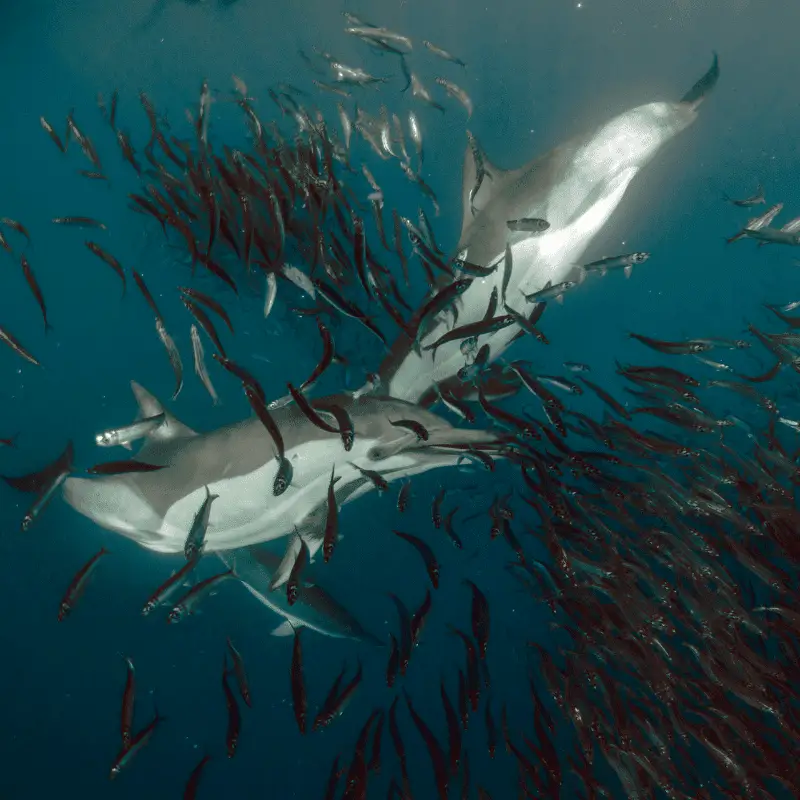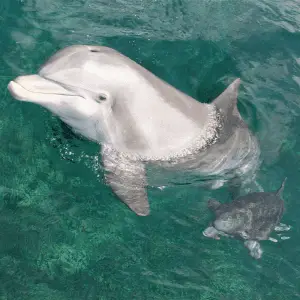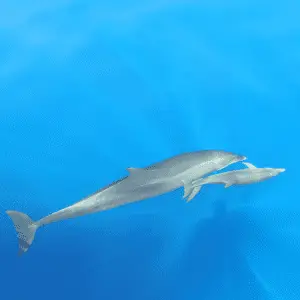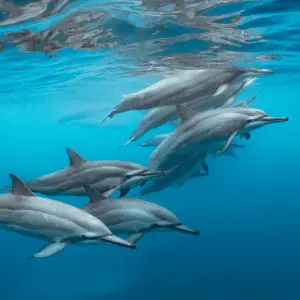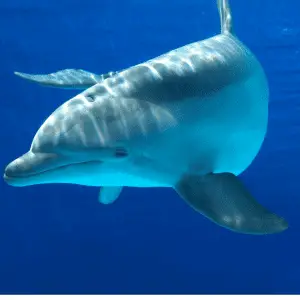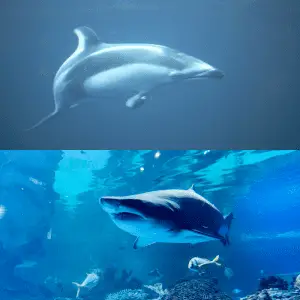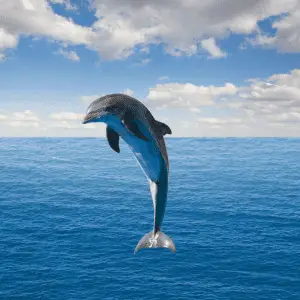Dolphins do not chew their food. Their teeth are not designed for chewing. Instead, they have a special compartment in their stomach that helps them grind down their food. If the prey is too large to swallow whole, dolphins will shake or rub it on the ocean floor until small pieces break off of the prey so that they can eat it.
Dolphin Teeth
Dolphins are marine mammals that need to hunt down fish and other aquatic animals for feeding. Dolphins cannot chew their prey. Their teeth are structured to be perfect for gripping onto the fish. If they are not quick about hunting down the fish, the prey will quickly swim away from them. So, instead of chewing on their prey, the dolphins needed to get a stronghold on them. The teeth of the dolphins are structured so that it helps them grab hold on of their prey firmly before they have a chance to swim away. By skipping the chewing process, the dolphin ensures a good amount of food goes down for digestion at any time.
Do dolphin teeth grow back when they lose one?
No, they only get one set of teeth for life. If the dolphin’s teeth get damaged or removed, they will not grow back. But each year, dolphins get a thin layer of tooth added to an existing tooth. If you dissect their tooth and count these layers, you can estimate how old they are. Each layer represents one year that a dolphin has been alive. For example, if four layers are seen, the dolphin will be roughly four years old, and if thirty layers are seen, the dolphin will be approximately thirty years old.
What do the dolphins eat?
Dolphins are carnivorous animals. They hunt and eat other marine animals, such as fish and crustaceans. Some even eat sea plants but not all. Several dolphin species live in various 0ceans and freshwater environments, so the dolphins’ diet varies significantly. Listed below are some of the foods a dolphin will eat.
- Anchovies
- Carp
- Catfish
- Cod
- Gobies
- Herring
- Krill
- Jellyfish
- Mackeral
- Mullet
- Octopuses
- Salmon
- Sardines
- Sawfish
- Shrimp
- Smelt
- Squid
- Tuna
There are more than 42 different species of dolphins living in the wild. You can find dolphins almost everywhere, from estuaries, freshwater rivers, and coastal waters to the deep and open ocean. Irrespective of the species, dolphins are mainly opportunistic feeders. That means they will feed on any fish or other marine animals sharing their homes. All dolphins mostly eat fish. However, the dolphins living in the open ocean mainly feed on squids and jellyfish.
Depending on their location and the water temperature, the diet of a single dolphin species can vary significantly.
Take the bottlenose dolphins, for example. You can find this dolphin species almost anywhere globally except the Arctic and Antarctic regions.
As their habitat is extensive, the diet of these dolphins mainly depends on their area of living and the time of the year.
Bottlenose dolphins living in Scotland generally eat salmon fish during spring and summertime. However, salmon are pretty rare in this area during winter, so these marine animals change their diet to mackerel and herring.
The bottlenose dolphin in other parts of the world hunts local fishes, like mackerel, mullet, and catfish.
Amazon River dolphins, for example, are known to eat more than 40 different species of freshwater fish. These animals also feed on freshwater crustaceans.
Dusky dolphins feed on shrimp, squids, and various fishes, including anchovies.
New Zealand dolphins feed on sweet and small fishes that you can find in shallow coastal waters.
Orcas are the most prominent member of the dolphin family. These Killer Whales feed on salmon, sea lions and seabirds. You can spot orcas in Northern British Columbia and the oceans of Canada.
How to tell dolphins age by their teeth?
Each year, a thin layer of tooth grows on an existing tooth. If you count the layers of the new tooth that have developed, you can estimate how old a dolphin is. The new layers represent one year that a dolphin has been alive. This is one of the ways to tell how old a dolphin is. However, experts can only do this by cutting the tooth.
Can dolphins smell their food?
Even though dolphins have a keen sense of taste, they do not have an olfactory nerve. Along with that, the olfactory lobes are also missing in dolphins. Even though dolphins can taste their food, they cannot smell it.
How do dolphins hunt?
Unlike whales, dolphins don’t simply open their mouths to consume fish. These ingenious animals devise several hunting techniques for capturing their prey effectively, such as herding, creating mud traps and following boats.
Here are several different hunting techniques that the dolphins use often.
Herding
Herding is one of the most common methods of feeding that dolphins use. Every pod member must work effectively in this method to create a tight fish ball.
How it works
Whenever a pod of dolphins locates a fish gathering, they surround it to reduce the dispersion area. Once the dolphins successfully create a small fish ball, they enter the school of fish from below and feed on the fish. Some dolphins will hunt the fish, and others will stand guard on the outer perimeter of the school so that the fish can’t escape. Then they swap positions, and everyone gets fed.
Boat Following
The bottlenose dolphins use this technique to hunt fish most of the time. In this technique, the bottlenose dolphins often follow the troller nets to hunt down the discarded fish or the ones thrown back into the water by the fisherman.
This type of hunting does not necessarily require the help of other group members. So, most of the time, the dolphins use this hunting trick alone.
Solo Mud Nets
Another technique, if a dolphin is alone, is to create a ring of mud around a fish gathering. By stirring up the sediment around them, a single dolphin can contain the fish to become scared enough that the fish jumps out of the water and straight into the mouth of a dolphin.

